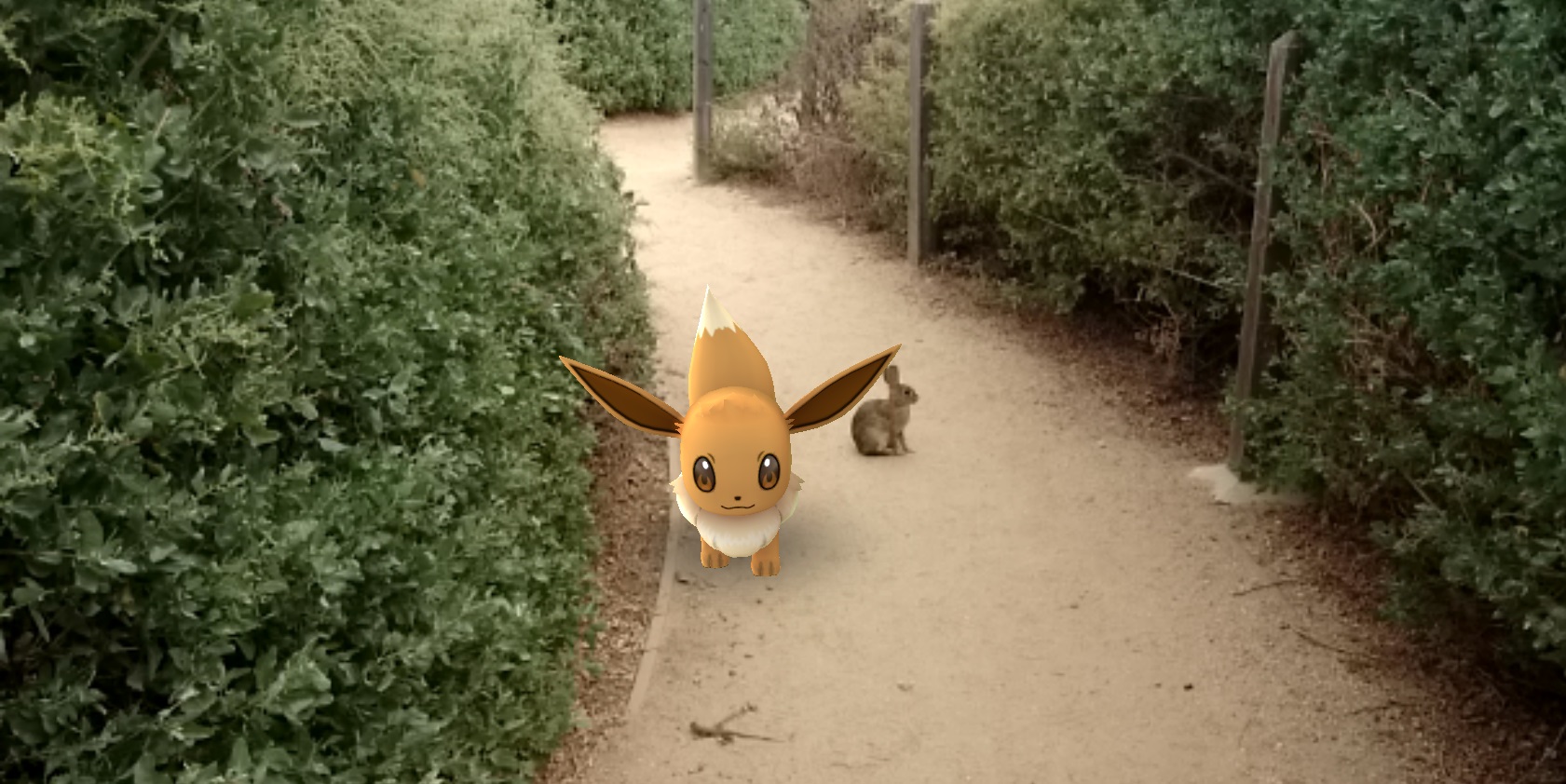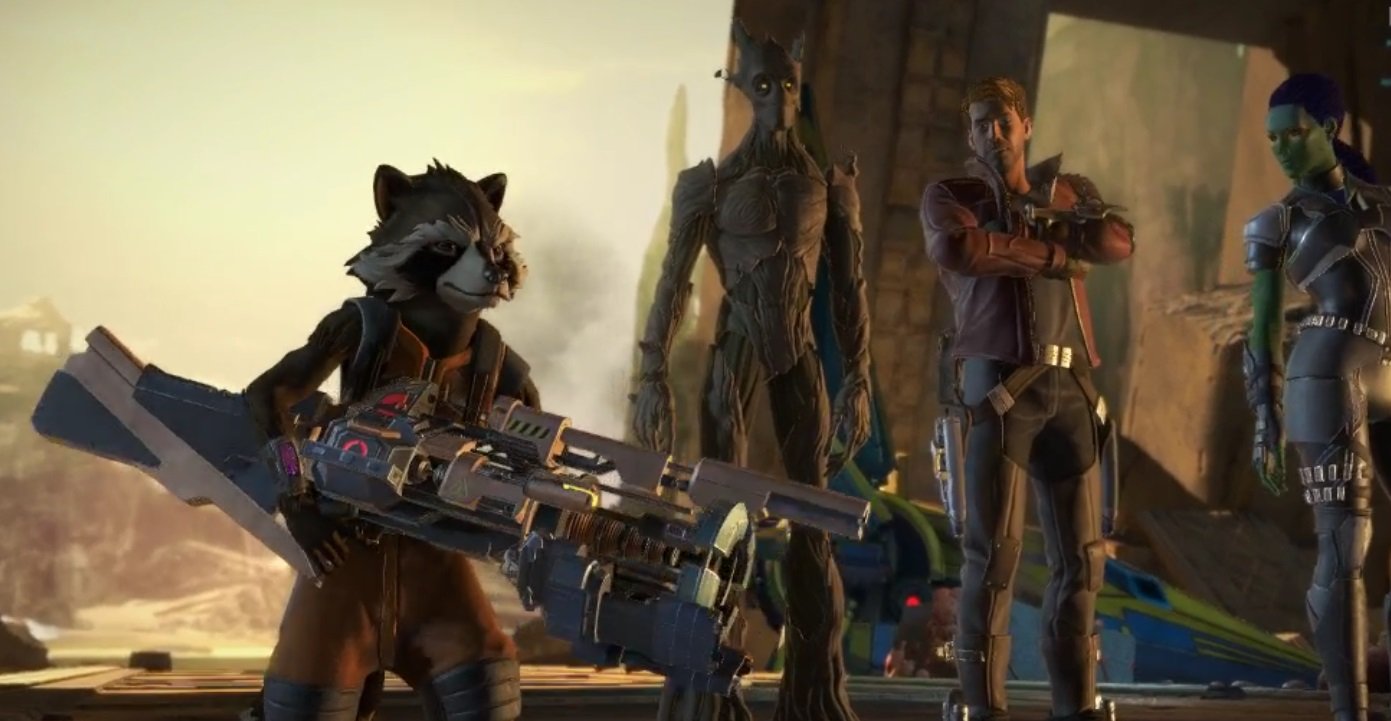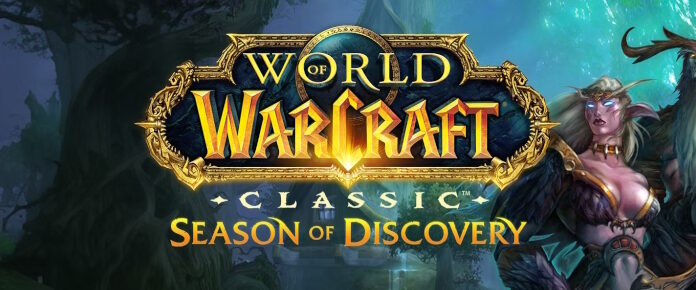
It’s no surprise that Ready Player One was constantly being referenced at GDC 2018, especially in VR, AR, and MMO panels. It’s not just because of the movie’s release but because the tech involved is seeing a surge of interest. That doesn’t mean we’re on the cusp, in my opinion, but it may be a thing we should start talking about.
And talking about it we did. As Bill Roper of Improbable and SpatialOS recently told me, “The next generation of online games isn’t going to behave like current-generation MMOs. […] We don’t know what a billion-person game might look like, but it’s likely to include a wide variety of playstyles, to reflect the diversity of its playerbase.” Even if you’re a cynic and don’t think SpatialOS will play any part of this future, Roper’s very much on the mark: Billion-person gaming isn’t going to be like our current MMOs.
Roper moderated a panel on the topic, inviting Herman Narula (Improbable), Randy Smith (Darewise Entertainment), Brendan “PLAYERUNKNOWN” Greene (PUBG Corporation), and Josh Holmes (Midwinter) to share their thoughts on the future. While some interesting conversation was had, I felt that there were some interesting contrasts with another panel on mitigating abuse before it happens, held by Tara Brannigan (flaregames), Nicole Lazzaro (XEODesign), Katherine Lo (University of California, Irvine), and Nova Barlow (Microsoft). Rather than just summarizing the two talks, which would be a waste of transcription efforts as you’ll be able to view them yourself eventually, I want to talk about how some of the ideas floated could affect not just the MMO sphere but society as a whole.

Who needs a guild?
One of the very first things Roper asked was this: In billion person gaming, how would players organize themselves? It’s a question that no one seemed to directly answer, but there are hints of it in social media. Already we have Facebook integration with many games: browser games, mobile games, even VR games thanks to the purchase of Oculus Rift. Social media’s already being integrated into our games, not just for sharing, but sometimes for basic communication needs companies don’t want to tackle themselves.
Granted, there may be problems with this. As both Roper and Narula discussed, who we are in-game and on social media (and to a degree, in real life) might not necessarily be who we really are. We curate our lives. We take flattering pictures of ourselves, we share what we think is shareable, and we prune what might make us look bad.
Call it vanity if you will, but it creates another issue: How well are we going to integrate with others in this virtual space, especially one that could potentially rob us of our anonymity, our curated veneer? A person we knew as a child might not be someone we’d get along with now, and a person we quest with in a game might be someone we’d never really want to spend time with in real life. Already this is an issue we may face as online gamers, as I’m sure we’ve all moved to new games and lost touch with players we thought we got along with, but maybe found out it was only within the confines of a particular game.
But why does this all matter before we even talk about the game itself? Because as Katherine Lo mentions, “community design is game design.” Again, looking at Facebook, the things that get the system to show you ads you’ll click also gets you to click on bad posts and misinformation. Look at games: Free-for-all PvP with items being dropped on death turns people into loot piñatas; instancing with strangers makes it easier to be a jerk and not worry about repercussions next game; rewarding unique loot from unique kills encourages thoughtless “kill first, lore later” play.
When you’re building a social game, designers need to think of how the players need to interact, a fact that I’d argue the majority of developers don’t consider, especially when convention demos for MMOs rarely involve actual multiplayer gameplay.
As Nicole Lazzaro notes, your game mechanics, in turn, create your community. It’s a two-way system, and your starting experience is really going to define who stays and who doesn’t. Lazzaro says that developers should build a starting experience that’s inviting for their target audience, and in order to make the game as welcoming as possible, you may want some “empathy hurdles” that make it harder for people who get banned to restart their accounts.
So, at this point, we’re assuming people will probably organize themselves similar to or even with the help of social media. It doesn’t necessarily mean putting social media into the game and, say, having Andrew Ross in-game being played by Andrew Ross. Having some anonymity might be good because as we’ve seen on social media, using a real name and photo doesn’t stop people from being jerks online either. With swatting on the rise, social networks would probably be an underlying friend system people opted into, with levels of “friendship” letting people elect when they go “full social.” The bonds people create and maintain are more important, since it ties people together in a virtual world that’ll essentially be a real, virtual world just based on the userbase size alone.
So why not make it family based? Imagine if our virtual world works as Chronicles of Elyria proposes: Your character must be born into the world and inhabit an existing character to play. Playing a character with a virtual “family” gives tons of perks: You’re in the same zone from day one, you can communicate easier, you can travel to them when they’re in need of support more easily, you can share housing, and so on. Alone? You get none of that. You can use it with strangers and make new ties, or you can jump in with familiar faces you (hope) you can trust.
So let’s say the game uses social media to help match people up. You see your friend is playing too but in a different family. Well, why not marry one of your virtual kids so you also become family and get all those sweet family perks? Conversely, if someone is acting out and you want to avoid him, sever the family connection and work around them. What’s important is that there’s a system in place that rewards socializing, but also is complex enough that, should a player get banned, he can’t easily rebuild.
On top of this, you could have families, jobs, political systems, and more. You probably will. We’ve all seen cliques in our MMO guilds, and I’m seeing similar things in my Pokemon Go groups that maybe Niantic didn’t intend. However, the latter feels a lot different because it’s not limited to the virtual world, and that’s important because once you reach billions of users, it normalizes the activity.
How billion-player gaming might intersect with the real world
Let’s ignore games for a moment. Think sports and the people who enjoy them. Yes, there are a lot of armchair coaches who just watch games on TV and chat about the players, but there’s also the scary fans. The fans that dress in their team colors, get tattoos, get into sports-related arguments, and even commit violence based on the outcomes of the game (both good and bad!).
And yet, sports are acceptable in society. Normal even. They have a lot in common with us gamers and even otaku, but I’d argue that because it’s more out there and culturally ingrained, it’s more acceptable.
Now think of modern geekdom versus what we experienced in the ’90s, ’80s, or even earlier. Think about how mass media covers cosplayers now. Think about how trendy stores now carry geek shirts. Think about how often you see people with Overwatch swag at the airport. As gaming becomes more acceptable, as it gains more followers, it becomes harder to ostracize. We’re already invading the sports sector. Our illnesses and wars are featured on mainstream news. And these are games with thousands or millions of players. Imagine if that were billions.
It’s something Narula brought up several times. For example, he notes that civilian fashion influenced military clothing, which in turn influences civilian fashion. Narula feels billion person gaming could lead to clothes that are inspired by games without being cosplay or specifically showing off a game logo (but these clothes already exist).
That’s just the start though. Look at how young people use their phones versus older generations. For many of us, it’s rude to take out your phone and start texting someone. However, what if it were a game? As in the above EVE article, can you imagine a world where you’re a guild that’s so famous that work would understand if you stayed home to defend your virtual territory? Even more, Narula asks how would permadeath factor into that? Again looking to EVE, the loss of ships and space stations, assigned monetary values based on economics that blur the line between virtual and real-world work and worth, make headlines. Now. And EVE is no World of Warcraft.
We may be seeing some of this with Pokemon Go already. The game exploded into the mainstream for a few short weeks but literally blurs the line between real world and game. I personally ended up adding some grim tags just because we kept getting tips about the horrible things happening in real life to POGO players. That’s ignoring the fact that we’d already seen gangs reform in virtual space and online theft leading to real-world death in past titles. If your game is going to have a billion players, you’re probably going to figure out how to keep that space safe.
Policing an actual virtual world
One thing that really hit home for me was when Brendan Greene from PUBG mentioned that, in virtual worlds, people need to both “fight and live,” a sentiment I wasn’t expecting from someone who made a simulator of a rather bleak movie. As Raph Koster recently said, the Ultima Online developers were very concerned about giving players the tools to deal with problems themselves.
However, how might that work in a virtual world with billions of players? Think about player made factions. Again, we’re assuming people will probably bring over and/or recreate their real-world groups because, duh, we see that in guilds run by friends in current MMOs. So why not in future games’ guilds where statistically they’d be more likely to know other players?
Lo, as a former moderator on Reddit, knows that the problem is complicated. You’re not only dealing with people with different personalities but people from different cultures. With the internet, the geographical space that divides us is suddenly gone, making it easier to form online gangs of people who share values that, when separated in real space, wouldn’t pose much of a threat.
That’s without the game being a thing yet. Lo mentioned a study about how being bad at games can lead to overcompensation via acting out, partially because games are seen as a male realm and that being bad at a game (or beaten by a girl) could be a threat to one’s masculinity (Thanks for the link, Dr. Lo!). This acting out causes issues for all other players, but potentially means female players and casuals could be targeted more. When we’re talking about billion-person games, can you imagine if a virtual space with a population of a large country were primarily male and looking to call out “bads”?
That’s just a quick idea of a potential, stereotypical problem. Depending on the game mechanics and audience, that might be easier to stop. There’s no singular solution, but rather a few ideas to float, as Lo reminds us. For example, Lo mentions that we probably can’t simply auto-moderate chat. AI has trouble contextualizing the difference when “GG EZ” is being used to taunt strangers or joke with friends – sarcasm is hard to parse, even for humans! What might be offensive in one culture might be friendly in another. Instead, AI could be used to scan for potential issues and real life moderators could act as, well, virtual police.
Similar to what Koster learned in UO, Lo notes that in her experience on Reddit, moderating worked best with active moderators working with transparent rules and processes. Active moderators. People in the community, who understand the particular culture they’re moderating. Even better is if the moderators work with the engineers/programmers and all related parties understand the jobs and limitations of the others. We’re getting idealistic here, but remember that Koster modeled some good skills when he was dealing with a community roughly the population of San Antonio, Texas. When we reach a billion users, we most certainly need to try to run things like a government, but maybe with some differences.
By having some anonymity, Lo notes that both the participants/players and the moderators can avoid real life retaliation, so while we probably wouldn’t be surprised with social media integration for a game of this size, we would hope that it would be well protected (but these days…. well, you know).
This may all come off as a “duh” statement, but one need look no farther than Riot games to see how a toxic community affects not just a single game but the parent company. League of Legends is so well known for its toxicity that our own readers didn’t realize that the addition of voice chat was limited to friends only.
If one described all the work on social research, community outreach, and incentiving charities Riot does, without saying their name, people would be impressed, but because of LoL’s reputation, it’s still dealing with a negative perception. Especially because of esports, Riot’s path to redemption is exactly what we’d expect from a company that would run a billion person game
This is why Lo suggests that developers need to be proactive, especially in the context we’re talking about. Think about what’s going on with Facebook right now. It’s well over a billion users, which is why we keep bringing it up. Narula asked, with billion person gaming, would there be room for multiple games of that size? Considering the fact that Facebook isn’t the only social media platform, I’d argue yes! Others are going to spring up around a billion person game, much like MMO clones rose around WoW. One false step and you risk losing users.
But all of this still leaves out something incredibly important: the actual game.
What would a game for a billion users even look like?
This is where Roper’s panel was a bit better at giving some meaty ideas. First, let’s start with IPs. Roper worked for Disney and knows that an established IP means playing by someone else’s rules. I’d argue that some companies are a bit more flexible (look at Nintendo’s work with the Smash Bros and Zelda IPs in the past ten years), but a new IP does mean more creative freedom without having to consult a company that may not understand the game development process. So maybe our game would be an original IP or one based on a pre-existing game IP.
Next ,what exactly will the game do? Narula noted that Facebook already has the numbers, but no one calls that a game. Second Life was another title he brought up that many of us will debate its “game” status. It’s important to make a clear distinction here: Facebook works at bringing in so many users because it asks the users to bring their experiences to the platform. A game is about creating new experiences. This is why I feel a billion person game would try to encourage one’s current relationships to follow them into virtual space. Using social media would then feed into that system, creating a loop.
But what of the content? What would players do? Already many of the developers noted that players in current themepark games eat content. Narula asked, “How do you feed a billion mouths?” Roper and Greene suggested through modders. DOTA 2, DayZ, and yes, PUBG are all big name games that grew out of a mod. Player made content could, hypothetically, be the answer. Not only does it potentially free the developers, but it could be a steady stream of cheap/free content.
While we have player-made content now, it rarely takes off. Offering real payment could change that, Narula argues, especially as he imagines many of our current jobs being replaced by machines. In our dystopian future, humans’ jobs could be essentially working for/in the billion-person game. After all, we have not only athletes, but vendors and stadium employees doing this with sports, so I could see games growing into something similar, though it does fill me with some anxiety. Let’s ignore that for a moment, though.
If you do go with user-generated content, we all know how bad it can be. How often do we give people tools and they just build phallic images? Try not to think of how much worse it’d be with a billion users! We’d need some kind of rating system in place, argues Narula, but even this could be gamed and based on subjectivity.
One thing most of the developers could agree on was that developer-centered content felt like a poor choice. Imagine the size of a virtual world that would need to hold a billion players. Unless you want to instance sections of that world into several copies, it’d be too large to reasonably create custom content for.
As Randy Smith of Darewise noted, themepark development is also more segregated. While it’s good for spreading players out into the world, it also tends to make your content linear, sending people into different zones that you’re constantly having to create. Instead, he suggested a focus on more “spiral” style gameplay, where you revisit and redo things in a different way. Think of sandbox games where all your supplies are scattered around the game world. You start off with what you need, have a reason to go out and explore, but also a reason to come back.
Then add in more systems. Maybe ecosystems where the resources can move. Narula brings up the idea of jackals eating the dead on a war field, having children, and essentially becoming their own force on the field. Maybe that causes players to chase resource spawns to a safer location, and doing that robs the jackals of the corpses they need to maintain their population.
By having these kinds of real-world inspired systems, developers would have less of a need to create content by hand and could focus more on systems. The question, however, is do players really want these?
As I get older, I notice many of my former MMO friends and our commenters jumping into not-so-massive worlds, including myself. With mobile games, we’re seeing more bite-sized content. Many developers Roper spoke to noted that one thing these session-based games have is constant action. You have a clearly defined beginning, middle, and end. These are not virtual worlds. Without you, these worlds don’t exist. They don’t need to be maintained. Nothing really changes actually, with or without you.
For the sake of this website and my job, I’m going to hope that, yes, people want virtual worlds and all the boring downtime they bring with them. But what’s the interaction going to be like? AR was floated by a member of the audience, and I’m sure certain developers hope Google Glass and similar products will lead to this, but I still see AR as stepping stone to better VR, which is what all the developers seem to be thinking billion-person gaming would head to.
However, there are a lot of problems with VR and I’ve already spilled a lot of ink in this article. To keep things short, let me point to Nicole Lazzaro, who notes that designers need to think about how they design “fun” and can use her 4 keys 2 fun to help determine that. As she notes, VR currently lacks hard fun, more serious fun. The goals generally aren’t frustrating (when the UI and controls work). They’re more spectacle, open loops, often more “serious fun” with exciting moments, repetitive actions, and eventually leading to calm zen as they master the systems.
Considering emotions as part of the game is important, she argues, because if there’s no emotion, there’s no fun, so no game. She argues people can lead to more challenging fun by increasing socializing opportunities that also come with coordinating more difficult tasks.
Ignoring the current issue of cost, an issue that springs up with this is that VR emotions are deeper, stronger, and more personal. It feels like reality, but as faces aren’t shown, we lose an important part of our ability to judge emotional reactions. Lazzaro notes that this can lead to social rejection so severe that it leads to physical pain.
I’m sure we’ve all had moments when we messed up online and blushed with embarrassment, but imagine if people could also suddenly see your body’s reaction. You might freeze up from nervousness, but without seeing your face, someone might think you’re angry as heck.
Then bring in VR’s ability to make things feel, well, real. Your fear of spiders might get triggered a bit dealing with giant crawlies in an MMO, but imagine having one of those giant, hairy, multi-eyed creatures appearing in your face as you turn a corner.
Players need to feel safe in VR. Mobs are just part of that. You need open space where people don’t get trapped or feel too enclosed. Then there’s the issue with bodies intersecting unintentionally. When it happens, it feels violating. Compound that with people who take advantage of virtual space to intentionally inflict that feeling on you by, perhaps, trying to touch you against your will. Lazzaro suggests having person space bubbles help prevent this, right from the start.
Combined with a system that puts you in a virtual space with people you know, it could be a great start. Maybe your adventure will be round-based, or maybe it’ll be an actual virtual world. Maybe the content is created and curated by the community, or maybe it’s a series of virtual systems guiding you around the world. Maybe the game will be so big that it employs you in real life. Maybe the game becomes the subject of mainstream news as people mourn the death or loss of virtual people or objects. As Roper said, we don’t know, but I’d argue that we’ve seen enough that we can make some pretty good guesses.

















